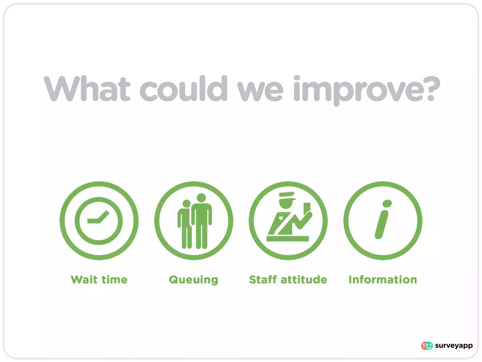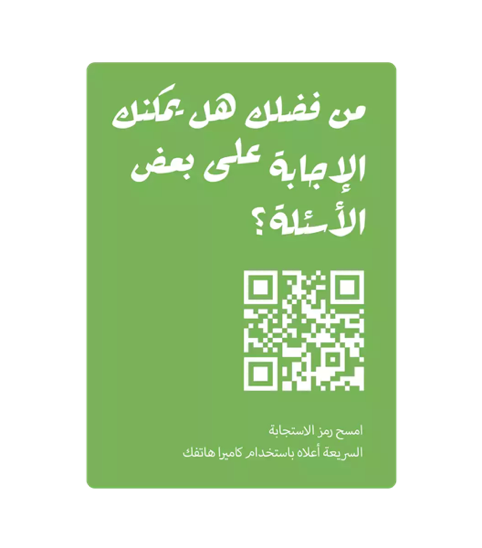Three Tough Questions for Airports
Real-time passenger feedback is the secret sauce that augments traditional data to help answer difficult questions.
Every airport uses data to help people moving through the terminals have a great experience. Flight schedules from OAG, boarding card scans from security and basic ideas about seasonality from MIDT help managers decide when to roster more staff and open extra channels. When airlines decide to deploy bigger planes or launch more flights, airports can clearly expect more passengers.
But a lot of questions remain unanswered and are tough to figure out using traditional sources. Questions like what languages passengers speak and whether they will be travelling on their own or in a group.
To make things harder, the answers often change across the seasons – more families travel in the holidays for example. Just for a little bit more difficulty even the airlines are often unsure, and even if they do know can be reluctant to share insights.
Some data transfer exists, but it is limited to a few special services like passengers requiring wheelchairs.
At Surveyapp we have found that the data generated from a deep and rigorous on-site passenger experience research programme can go a long way to answering four types of difficult questions that airline managers face every day.
Question 1: How many staff do I need at each time?
To some extent this one is easy – the more flights scheduled to arrive or depart in a given window, the more immigration, security or gate staff are needed on the roster. But in practice there are three complications.
The first issue is that some flights are more heavily populated by frequent travellers who are familiar with the airport experience. These flyers will tend to check fewer bags, have their boarding cards ready and move through security faster.
When travellers are less familiar with processes or travelling in groups where people spend time checking that they are all together, queues can build up. If it takes just two or three extra seconds for each of a thousand people to pass through security – laptop and liquids outs, belts off, trays processed etc… – a 20, 30 or 40 minute queue can result from only three to five plane-loads.
A second complexity arises from the languages passengers speak. Airline passengers do not just start at hubs. Many connect and if customer service is necessary to handle a missing bag communication can sometimes be difficult.
The third complication comes at immigration. Just because a plane is flying into a country every day does not mean that the proportion of “home” and “away” citizens is the same each time.
If one day a plane is full of “home” citizens, border staff may find their shift finishes early as passengers are waved through. Another day, plane-loads of “away” visitors may arrive and processing arrivals may take longer than expected.
In practice airlines communicate details about arriving passengers through the Advance Passenger Information System (APIS), which provides information to border forces about plane manifests. But the process is not perfect, especially when many travellers are booking at short notice.
At Surveyapp, we find that the data generated by deep and detailed passenger experience surveys can help answer these questions. With our tablet-powered survey kiosks, passengers can be asked if they are travelling together or a frequent traveller, or the information may sometimes be gleaned from a boarding pass scan. As well as their experience on the day, they can be asked if they have experienced the airport before and whether it was better or worse than last time.
When passengers elect to use a different language on Surveyapp tablet terminals that gives insights into where people are coming from and the trends behind what the key languages spoken in the airport at certain times of the day and year.
Comparing the answers about queues at security and immigration with traditional sources about the number of passengers passing through can help identify trends that standard analysis based on volumes and capacity might miss.
In these ways, considering passenger research as a creative exercise in data analysis can help determine how many staff to roster at each time and on each day.
Question 2: Do I have the right balance of space given to seating, retail, food & beverage and other facilities
Every passenger spends a different amount of time at the airport. Some arrive as late as possible and move through quickly. Others prefer to arrive early, take a seat by the gate and wait safe in the knowledge that they are ready and will not miss the plane. And certain passengers may not have a choice, for example because their departing flight is delayed or their arrival was too late to make a scheduled connection.
The ways people use the airport are all different too and can depend on exactly why they are flying, the type of flight (long-haul vs short-haul for example), their class of service (with or without resulting lounge access) and the time of day.
A well-designed terminal will balance seating space, retail distractions and places to eat and drink so that most passengers can use the facilities they want, most of the time.
Customer research can help airports figure out whether or not they have the balance right. The Surveyapp tablet-powered survey kiosk is uniquely equipped to help people tell the airport what they are doing well and what they are getting wrong.
We give people answering the questions the chance to explain why they are having a good or a bad experience. This can be through offering pre-designed selections like “not enough seating”, “not enough shopping” or “not enough loos”. But passengers can also enter free text.
By using customer research data collected in this way, airports can plan their facilities and development programmes based on real-world data about how passengers use their terminals in real-time.
Question 3: Are service level agreements with handling agents being achieved?
At many airports, three critical areas of the passenger experience rely on achieving specific objectives that are hard to measure objectively – baggage delivery, security and cleaning.
For example an airport may try to achieve security queues under ten minutes for 95% of passengers, bag delivery within 25 minutes of landing for 95% of passengers and high standards of cleanliness, especially in loos.
With Surveyapp tablet kiosks and QR-code surveys which can be answered directly on the passenger’s phone, instances of below-standard service can be identified and appropriate restitution made to passengers. When large volumes of complaints appear the airport operator knows that something has gone badly wrong and can take steps to ensure it does not happen again.
In this way, deep and detailed customer research can help ensure that the airport and its handling agents are taking all reasonable steps to deliver desired service standards.
oliver AT surveyapp DOT io
savio AT surveyapp DOT io




